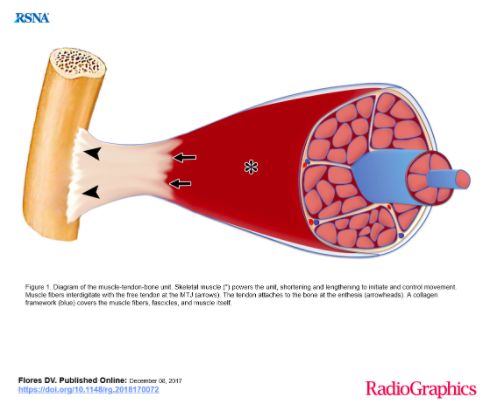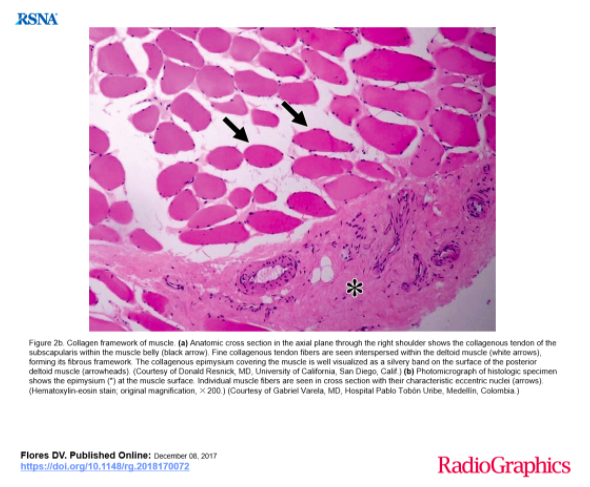With sports seasons hopefully about to ramp up post-COVID-19, muscle strains or tears will become more common for those lucky enough to be running or playing sports.
Muscle strains are injuries that occur to muscles that result in muscle fibres being damaged or torn. This is usually due to the muscle being placed under high load (eg. sprinting or change of direction) or contracting in a lengthened position (eg. kicking or reaching out for a ball).
There are some exciting new ideas and evidence about ways to manage muscle injuries of the hamstring, quadriceps, and calf.
A New Type of Muscle Injury
First, let’s have a look at a diagrammatic representation of muscle.

Epimyseal tears are a new concept in the understanding of muscle injuries. The epimysium is the layer of covering between two muscle groups. Tears can develop within this covering with no actual muscle fibres being disrupted.

The way in which these present and test upon assessment are different from other types of muscle strains and can be differentiated by a skilled physiotherapist. Elite athletes requiring an image may find MRI useful as ultrasound imaging is usually not sufficient to penetrate deeper into large muscles.

A key difference in rehabilitation for people with these injuries is load management and modifying related risk factors. These types of injuries are often surprisingly acceptable to play with but addressing the reasons as to why the injury developed is key to a fast recovery and preventing injury recurrence.
New Management Concepts
Previously running has been an activity that has been avoided until 7-10 days after the injury has occurred for those diagnosed with a muscle strain. It is now understood that an early return to running (within 2-3 days for some injuries) can be beneficial in some cases. An early return to running may assist in minimising muscle atrophy (wasting), reducing tightness in muscles (increasing tissue length). These are all factors that optimise outcomes from rehabilitation (including early return to sport or other healthy physical activity). The timeframes associated with returning to running will be dictated by the type of injury, the site of injury (eg affected muscle), and pain levels. A skilled physiotherapist can assist those with muscle strains to rehabilitate effectively and recover well.
What hasn’t it changed
Management of muscle injuries still require:
- RICE – Rest, ice, compression, elevation – within the first 72 hours, and especially for compression for longer periods (eg compression wear) *ensure that the muscle and the overlying skin is cooled and not frozen by testing the skin regularly in the early stages of applying ice (it should feel cool/cold, not achey).
- Strengthening – for return to activity and to reduce the risk of recurrence, addressing strength deficits is still key, and not just for the affected muscle. Often the reason a muscle group is overloaded (eg quadriceps) is because another muscle group (eg glutes or adductors) are not doing their job when required or when the body is fatiguing
- Functional activities – retraining proprioception (awareness and balance) around the affected muscle group is also highly important to avoid recurrence and this is best done with exercises that mimic the activity you want to return to.
- Cross-train in the interim before returning to full activity – maintain your cardiovascular fitness and optimise strength and function of the rest of your body while your injury heals. Think protected weight bearing activity like bike, pool or elliptical trainer or Pilates & yoga
References:
- Pollock N, Patel A, Chakraverty J, et al Time to return to full training is delayed and recurrence rate is higher in intratendinous (‘c’) acute hamstring injury in elite track and field athletes: clinical application of the British Athletics Muscle Injury Classification British Journal of Sports Medicine 2016;50:305-310.
- Prakash A, Entwisle T, Schneider M, et al Connective tissue injury in calf muscle tears and return to play: MRI correlation British Journal of Sports Medicine 2018;52:929-933.
- van den Tillaar R, Solheim JAB, Bencke J. Comparison of hamstring muscle activation during high-speed running and various hamstring strengthening exercises. Int J Sports Phys Ther. 2017;12(5):718–727.
